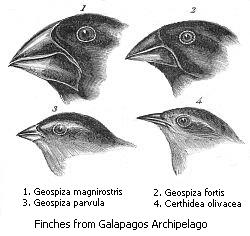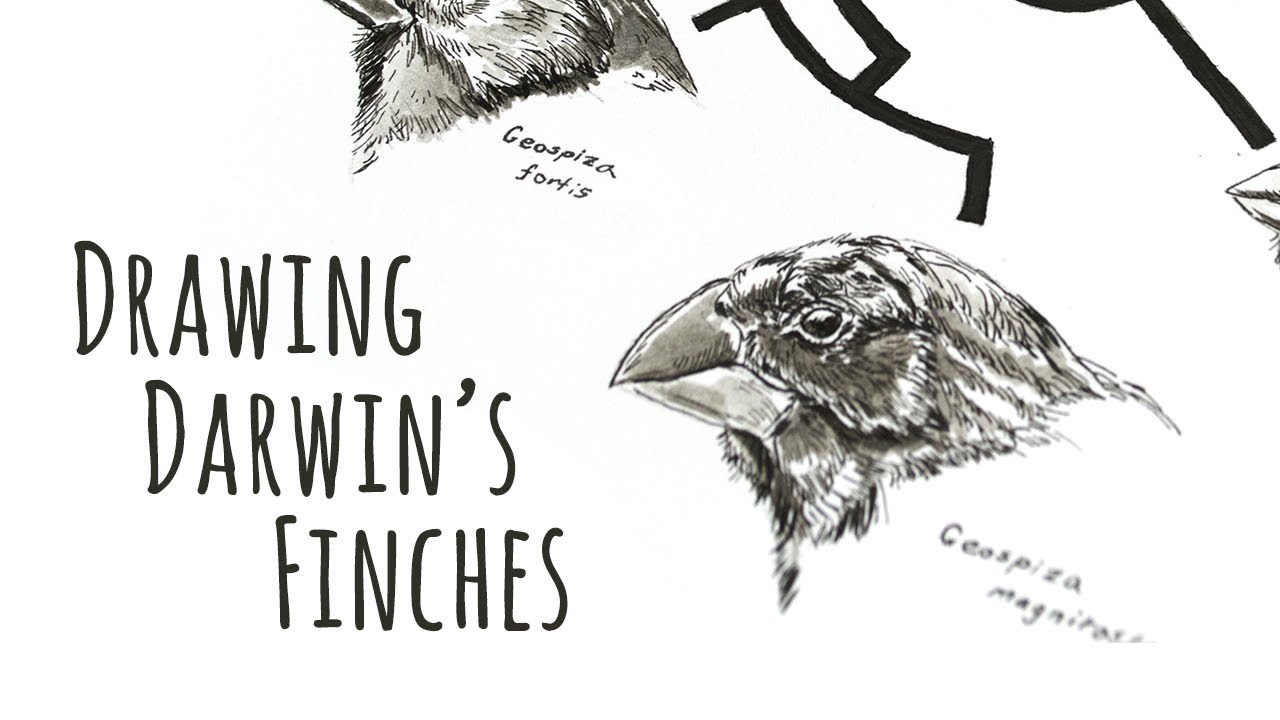

Most of the organic productions are aboriginal creations, found nowhere else.” Yet all of the creatures showed a marked relationship with those from the American continent.

How, Darwin asked himself, had life first come to these islands? “The natural history of these islands,” he later pointed out, “is eminently curious, and well deserves attention. “Hence, both in space and time, we seem to be brought somewhat near to that great fact-that mystery of mysteries-the first appearance of new beings on this earth.”

“Seeing every height crowned with its crater, and the boundaries of most of the lava-streams still distinct, we are led to believe that within a period, geologically recent, the unbroken ocean was here spread out,” he wrote in his Journal of Researches. The Galápagos Islands were formed by volcanic eruptions in the recent geological past (the oldest of the islands emerged from the ocean just three million years ago), and Darwin realized that the remote setting must have presented life with a new beginning. Darwin had wholeheartedly accepted this theory, which was bolstered by the biblical account in Genesis, until his experiences in the Galápagos Islands began to undermine this way of thinking about the biological world. According to the well-established creationist theory of Darwin’s day, the exquisite adaptations of many species-such as the hinges of the bivalve shell and the wings and plumes on seeds dispersed by air-were compelling evidence that a “designer” had created each species for its intended place in the economy of nature. Darwin’s five-week visit to these remarkable islands catalyzed the scientific revolution that now bears his name.ĭarwin’s revolutionary theory was that new species arise naturally, by a process of evolution, rather than having been created-forever immutable-by God.
#DARWIN BIRD SKETCH SERIES#
The Beagle’s captain, Robert FitzRoy, described the barren volcanic landscape as “a shore fit for Pandemonium.” At 26, Darwin had come to the archipelago, which straddles the Equator some 600 miles west of Ecuador, as part of the Beagle’s five-year mission to survey the coast of South America and to conduct a series of longitudinal measurements around the globe. This is the deceptively treacherous world of sun-baked lava, spiny cactus and tangled brushwood into which Charles Darwin stepped in September 1835, when he reached the Galápagos Islands with fellow crew members of the HMS Beagle. A sign in the Tortoise Reserve says bluntly: “Stop. A former Israeli tank commander, he had been in top physical condition, yet had managed to go only six miles before succumbing to the searing heat and lack of fresh water. In the end, fishermen discovered the young man’s body. In fact, some of the searchers themselves became lost and had to be rescued. Amassive, two-month search failed to find him. One was a young Israeli tourist who lost his way in Santa Cruz’s Tortoise Reserve in 1991. Most were subsequently found alive after having become hopelessly lost in dense underbrush and rugged volcanic terrain. On Santa Cruz Island, where the Charles Darwin Research Station is located, 17 people have disappeared since 1990. The minute a person steps off any of the tourist trails created by the Galápagos National Park Service and heads into the untamed interior of one of these islands, there is the risk of death under the intense, equatorial sun. I found these images here, where you can find more of his birds, as well as many of his other illustrations and publications.From the nine times I have made the 5,000-mile journey to the Galápagos Islands, to follow in Charles Darwin’s footsteps, the most enduring impression I have gained is of life’s fragility. Beagle (1839) have always seemed very beautiful to me, and the care with which he illustrated them is reflected later, in the way that he elegantly explained his theories in his Origin of Species. A lthough Darwin was not quite the artist that Haeckel was, his illustrations, especially the birds he drew in his The Zoology of the Voyage of H.M.S. My apologies! And thank you to Michael Barton for letting me know!Ī while back, I wrote a post about Ernst Haeckel and his beautiful illustrations, and it is only fitting that now, during our celebration of Darwin week, that his illustrations be featured, as well. Gould, with that admirable success, which has attended all her works.” Gould himself, and executed on stone by Mrs. “The accompanying illustrations, which are fifty in number, were taken from sketches made by Mr. These illustrations were not drawn by Darwin: Another Darwin Week (yes, now it’s a week) post.


 0 kommentar(er)
0 kommentar(er)
